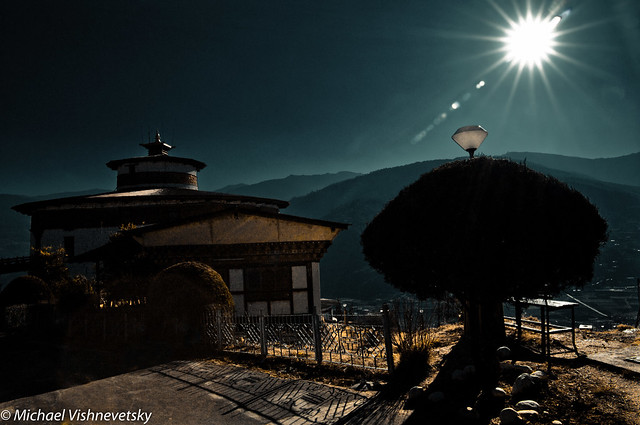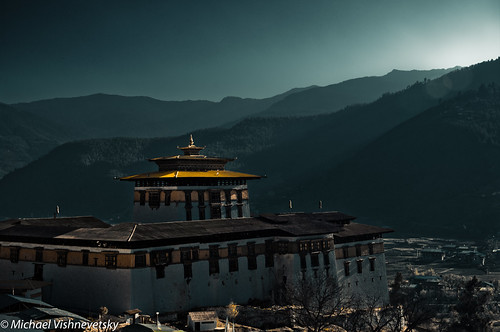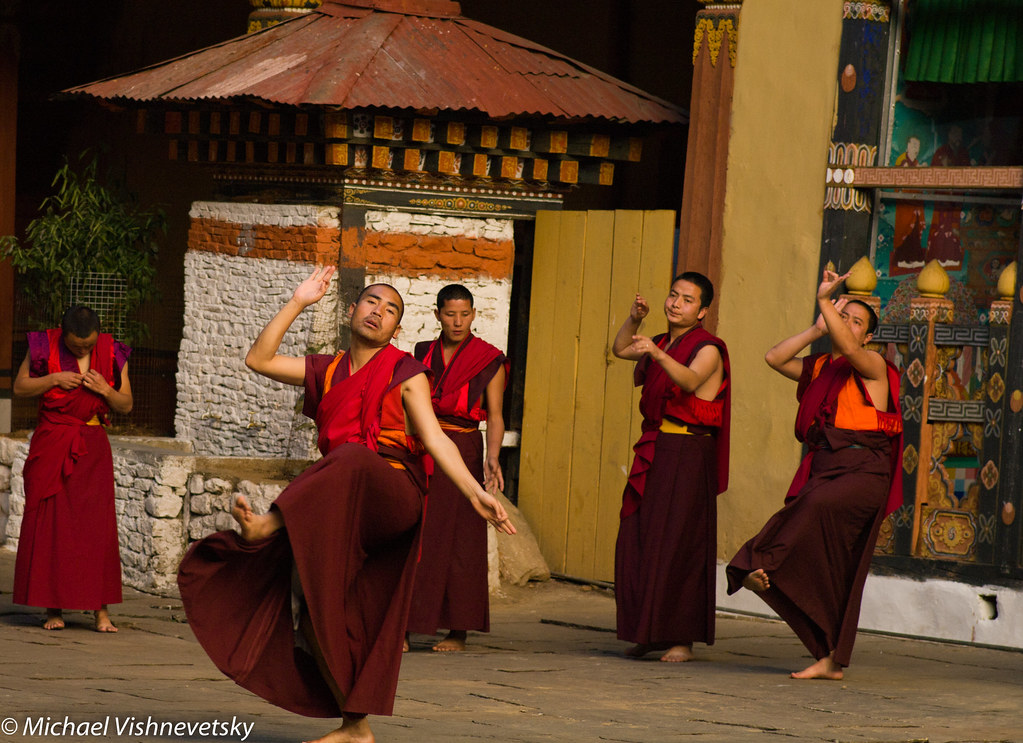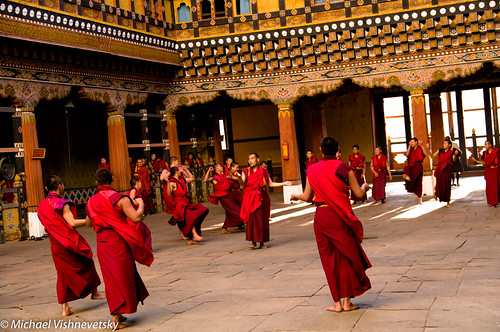Most significant I would say has been my recent (March 1-15) trip to Bhutan, a tiny little Buddhist kingdom in the Eastern Himalayas, surrounded by countries like Nepal and India, with Tibet just over some really tall and insurmountable rock. In an earlier post, I expressed my interest in traveling to this last Shangri-la, though originally I had thought about joining National Geographic's expedition to Bhutan. Of course then I found out that I'm pretty darn lucky, as Chencho Dorji, research officer from the National Biodiversity Centre in Bhutan, had visited SBC a month before I first arrived, and left an open invitation to all the staff. I was encouraged to pursue his council on planning my trip, and over facebook, we became friends and he expressed his commitment to giving me the "total experience" [of Bhutan]. He was able to get me a visa (natives are allowed 2 visas that they may extend to outsiders), saving me around $200/day over a 15 day trip. Of course I didn't know this at the time, but this amicable fellow also has a tour guide license and knows a great deal about his country, especially botany/ethnobotanical traditions. An added twist of fate/fortune made it so the Enrichment conference (Present your work for 20 minutes, shmooze and booze in Bangkok for 4 days) for Fulbrighters in S.E. Asia was planned to start the day after I finished my Bhutan trip, and that the event would be in one of only three cities providing flights to Bhutan's single airport in Paro. Fulbright would cover my trips between Kuching and Bangkok. Win.
So thinking about how to organize this post has been stressing me out a bit, since there is just so much I would like to cover, and I want to put it together in a digestible fashion. I figure I might divide up my spiel into a few separate posts.
Getting to Bhutan
First off, the way my flights were arranged, I had to spend a day at Bangkok's Suvarnabhumi airport- not a bad one to spend a day at, since I was able to enjoy a massage and multiple different curries (not to be combined though). Also had I needed urgent medical attention, there is an excellent medical clinic in the airport as well. I also had some time to observe and appreciate the many different strategies people employ in trying to get some shuteye at an airport- you've got people with comforters, pillows, and even eye masks who lay out on the floor in luxury; then there are those who nod off while in a chair, with their heads slowly drifting down before they sense themselves falling and wake up (only to nod off again in a matter of seconds); there are some unique cases of people sitting on one piece of luggage and resting their heads on another set of luggage. Anyway, onto more interesting topics.
My flight to Paro, Bhutan, was being serviced by Druk Air, the only airline that flies to and from Bhutan. The flight lasted about 4 hrs, ending in a beautiful sunrise and descent that included our plane wrapping around snow-capped mountain ranges and finally landing in the valley. Not even exiting the plane, I was already entranced by the majestic landscape all around me.
I was greeted by my new friend Chencho, and we drove a short bit to his granny's house, where his cousin already prepared some breakfast, including some red rice, toast with homemade jam, and butter tea, a Bhutanese specialty. This butter tea is made with salt, freshly churned butter, and local tea leaves. It was unbeatable in its ability to warm and relieve my cold-shocked body. It was probably not even that cold, like between 10 and 15 degrees centigrade; but a crazy jump to make from the tropical paradises I just flew in from. After this simple comfort and some quality time near their kitchen's wood heater (kind of a furnace for wood burning connected to a chimney) we went off to his aunt's home, where I took a much needed nap.
For lunch we enjoyed some Traditional Bhutanese food. Some of it was adapted from Indian cuisine. I totally did not mind the daal and paneer we were served. But I immediately fell in love with Bhutanese food (big surprise there). It was the succulent and mouth/nose watering chili chicken, the savory dumplings, super spicy long beans, a soul-warming hot and sour chicken soup, and a hefty serving of Bhutanese beer I was poured. Of course all of these dishes were just the supporting cast to these people's real mainstay, RICE. Red rice is a specialty of this region and I had heapfuls of it. Yep, I can live well here.
Since I did not want to lounge around on my first of few days in this amazing country, we visited Ta-Dzong, which used to be a fortress overlooking the all important Dzong of Paro.
 |
| Ta-Dzong. Experimenting with some cool presets in the photoediting software, in order to convey the mysterious, serene, and mystical aura I am sensing in Bhutan. |
Dzongs function as administrative buildings for each District, but also are often monasteries/temples, and therefore sites of incredible buddhist spiritual clout. Ta-Dzong has now become a museum of all things Bhutanese- weapons used in battle, utensils and cooking ware, stamps, art, etc. Unlike any other museum I've been to, many of these items, though seemingly antique, are actually used in regular rural life throughout Bhutan. This understanding was the first of several realizations that have utterly blown my mind with regard to how unique these people and their land are.
Next we stopped by the famous Paro Dzong, and stumbled upon some monks/mini-monks (my word for youngsters in their first years on the path to becoming a monk) practicing special dances they would later perform at the famous Buddhist festival called "Tsechu," known to be especially glamourous in Paro (it becomes like a runway for the most extravagant displays of Kira modeling (Kira is the traditional dress of women in Bhutan, worn at official functions (often to work), and special cultural/social/religious occasions).
 |
| Paro Dzong. Same edit as for the Ta-Dzong. |

Day one and already my impression of Bhutan is intensely rich and multi-layered. From this day forth, I have continued to remain enraptured by the magic of this place. Every single day in Bhutan, i would continue to feel moved by the people, culture, environment, and inexplicably beautiful spirituality pervading every space in the land of the thunder dragon.


No comments:
Post a Comment